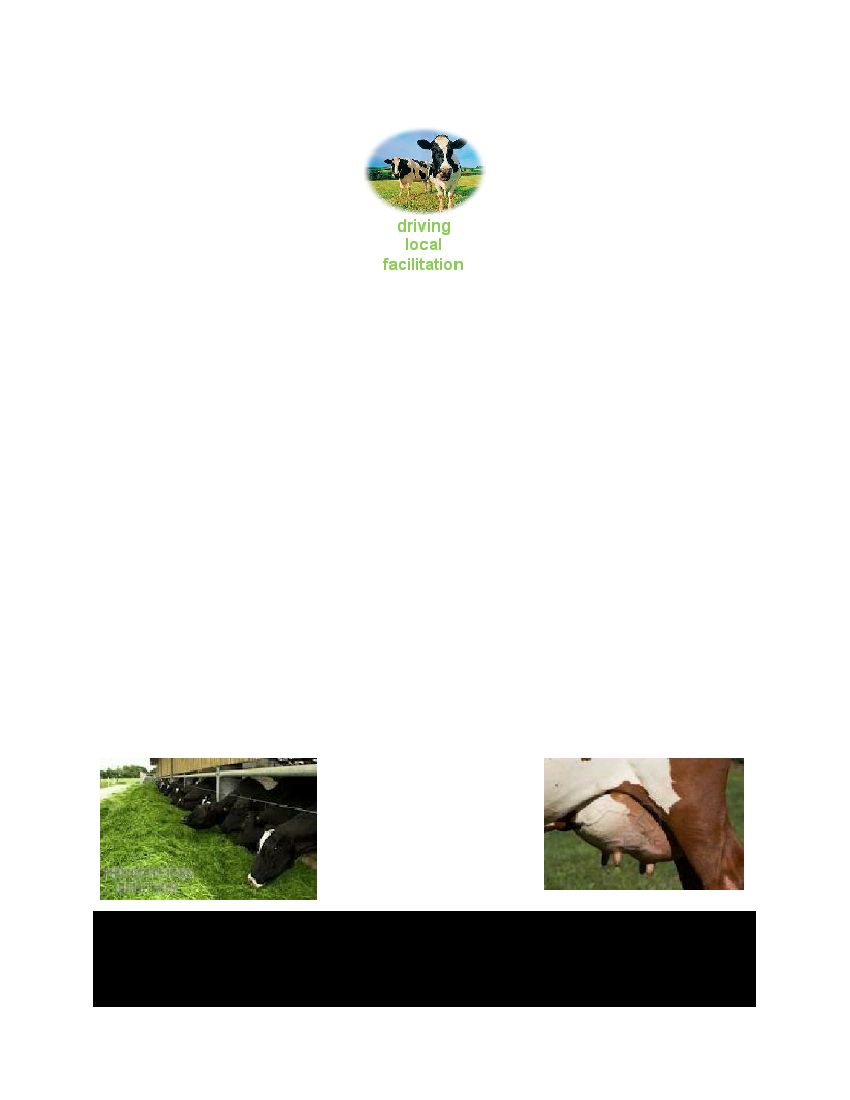
DRIVING FACILITATION
Partnering with local facilitators is a process that goes beyond mere selection. It is important to actively
engage the market and requested organizations to step forward to partner with the program by requesting
expressions of interest from interested players. Adverts can be placed in newspapers and relevant journals
or organizations targeted directly to support open and pragmatic selection. Being explicit about the offer and
clear about the incentives and risks involved will help would-be facilitators to decide if they do or do not
want to be a program partner. Findings from any research surveys about the market should be made
available to all organizations as a public good. Setting strict criteria will also help the super-facilitator to
select the local facilitators to work with in the short term and which others to dialogue with for future
engagement.
Local facilitator partners must sign a contract stating exactly what they will deliver in terms of inputs. It must
also state what the program expects the facilitator to provide and assist in leveling the facilitator's
expectations. In turn the facilitators will then 'partner' with small business organizations (coops and
associations, processors and local service providers (SP) and again this is about being explicit about the
offer; with clarity about the role of the facilitator versus the SP, expected benefits and the incentives and
risks involved. The facilitator's role is to provide support to these organizations to develop sustainable
relationships and relevant commercial services. Often support may just involve facilitating them to
strengthen existing linkages with their producers/consumers. It may also involve supporting suppliers to
disseminate information about their services and demonstrating the benefits to the farmers. The program
implemented a series of dairy sector Business Opportunities seminars to expose SPs to methods of
marketing their services to dairy farmers. KDSCP actively supported the service providers to develop, test
and market demand led services. The key objective is to build the capacity of SPs in order for them to remain
sustainable after the KDSCP comes to an end.
Capacity building can involve a myriad of activities from formal training to linkages workshops, network
building and intelligence and awareness building via publicly disseminating research and organizing field
trips. Different interventions may be required with different providers. It is about a clear understanding of
existing capacities and knowledge plus the information and skills gaps that require attention. It is about
capacitating the right people to their jobs more efficiently and more effectively. KDSCP facilitators undertook
much of the training, technical services and research required to bring about service delivery because these
functions were weak. However none of the transactions were subsidized by the program.
The local facilitator must also collect
relevant data for monitoring purposes.
This includes supporting the SPs to
maintain records relating to sales and
sales revenue. The KDSCP estimates
that as of year four of program
implementation, SP revenue has
reached approximately KShs 25 million
against a program target of KShs 20
million.
In some cases service delivery can be cost shared by a program in order to demonstrate the value and benefits of the services to
users and link suppliers to consumers. This is in a bid for them to purchase those services in the future at full cost. Subsidies are
not bad but they must be used wisely. Using subsidies can demonstrate the opportunity to small businesses organizations and
providers and allow them to better understand the needs of the consumer. Such understanding allows providers to develop or
revise services to meet demand and better ensure the commercialization and profitability of those services going forward.
46